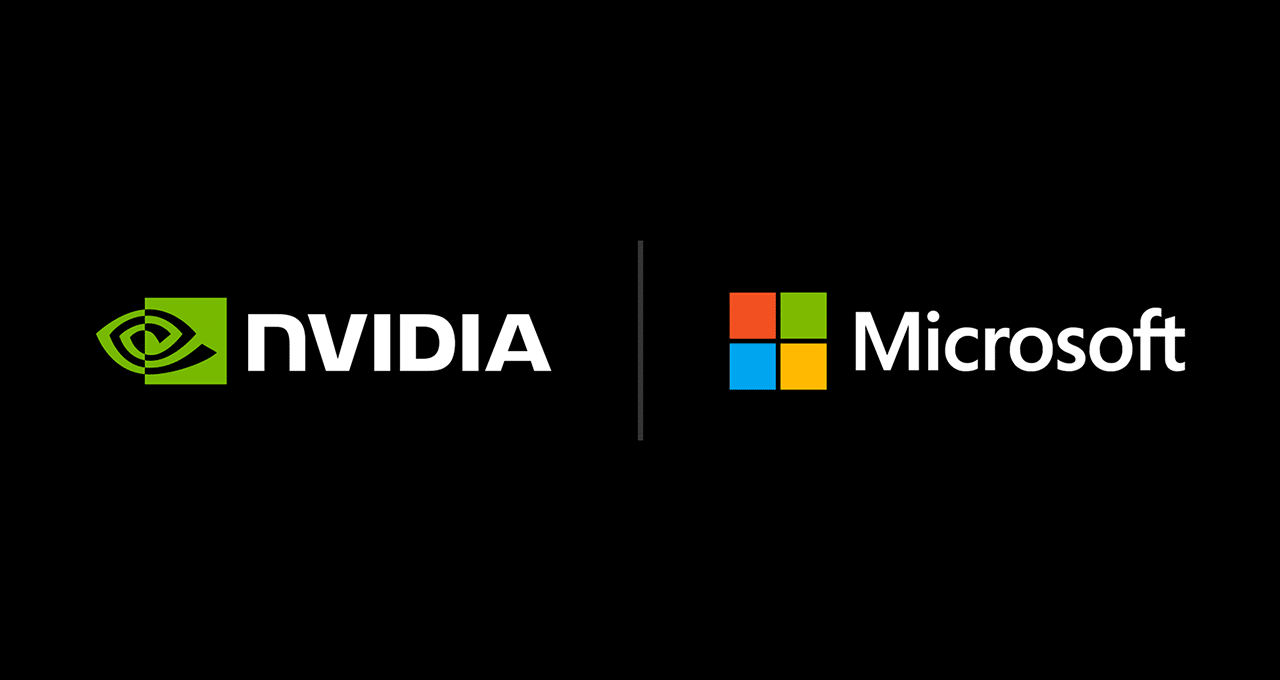
NVIDIA and Microsoft today unveiled product integrations designed to advance full-stack NVIDIA AI development on Microsoft platforms and applications.
At Microsoft Ignite, Microsoft announced the launch of the first cloud private preview of the Azure ND GB200 V6 VM series, based on the NVIDIA Blackwell platform. The Azure ND GB200 v6 will be a new AI-optimized virtual machine (VM) series and combines the NVIDIA GB200 NVL72 rack design with NVIDIA Quantum InfiniBand networking.
In addition, Microsoft revealed that Azure Container Apps now supports NVIDIA GPUs, enabling simplified and scalable AI deployment. Plus, the NVIDIA AI platform on Azure includes new reference workflows for industrial AI and an NVIDIA Omniverse Blueprint for creating immersive, AI-powered visuals.
At Ignite, NVIDIA also announced multimodal small language models (SLMs) for RTX AI PCs and workstations, enhancing digital human interactions and virtual assistants with greater realism.
NVIDIA Blackwell Powers Next-Gen AI on Microsoft Azure
Microsoft’s new Azure ND GB200 V6 VM series will harness the powerful performance of NVIDIA GB200 Grace Blackwell Superchips, coupled with advanced NVIDIA Quantum InfiniBand networking. This offering is optimized for large-scale deep learning workloads to accelerate breakthroughs in natural language processing, computer vision and more.
The Blackwell-based VM series complements previously announced Azure AI clusters with ND H200 V5 VMs, which provide increased high-bandwidth memory for improved AI inferencing. The ND H200 V5 VMs are already being used by OpenAI to enhance ChatGPT.
Azure Container Apps Enables Serverless AI Inference With NVIDIA Accelerated Computing
Serverless computing provides AI application developers increased agility to rapidly deploy, scale and iterate on applications without worrying about underlying infrastructure. This enables them to focus on optimizing models and improving functionality while minimizing operational overhead.
The Azure Container Apps serverless containers platform simplifies deploying and managing microservices-based applications by abstracting away the underlying infrastructure.
Azure Container Apps now supports NVIDIA-accelerated workloads with serverless GPUs, allowing developers to use the power of accelerated computing for real-time AI inference applications in a flexible, consumption-based, serverless environment. This capability simplifies AI deployments at scale while improving resource efficiency and application performance without the burden of infrastructure management.
Serverless GPUs allow development teams to focus more on innovation and less on infrastructure management. With per-second billing and scale-to-zero capabilities, customers pay only for the compute they use, helping ensure resource utilization is both economical and efficient. NVIDIA is also working with Microsoft to bring NVIDIA NIM microservices to serverless NVIDIA GPUs in Azure to optimize AI model performance.
NVIDIA Unveils Omniverse Reference Workflows for Advanced 3D Applications
NVIDIA announced reference workflows that help developers to build 3D simulation and digital twin applications on NVIDIA Omniverse and Universal Scene Description (OpenUSD) — accelerating industrial AI and advancing AI-driven creativity.
A reference workflow for 3D remote monitoring of industrial operations is coming soon to enable developers to connect physically accurate 3D models of industrial systems to real-time data from Azure IoT Operations and Power BI.
These two Microsoft services integrate with applications built on NVIDIA Omniverse and OpenUSD to provide solutions for industrial IoT use cases. This helps remote operations teams accelerate decision-making and optimize processes in production facilities.
The Omniverse Blueprint for precise visual generative AI enables developers to create applications that let nontechnical teams generate AI-enhanced visuals while preserving brand assets. The blueprint supports models like SDXL and Shutterstock Generative 3D to streamline the creation of on-brand, AI-generated images.
Leading creative groups, including Accenture Song, Collective, GRIP, Monks and WPP, have adopted this NVIDIA Omniverse Blueprint to personalize and customize imagery across markets.
Accelerating Gen AI for Windows With RTX AI PCs
NVIDIA’s collaboration with Microsoft extends to bringing AI capabilities to personal computing devices.
At Ignite, NVIDIA announced its new multimodal SLM, NVIDIA Nemovision-4B Instruct, for understanding visual imagery in the real world and on screen. It’s coming soon to RTX AI PCs and workstations and will pave the way for more sophisticated and lifelike digital human interactions.
Plus, updates to NVIDIA TensorRT Model Optimizer (ModelOpt) offer Windows developers a path to optimize a model for ONNX Runtime deployment. TensorRT ModelOpt enables developers to create AI models for PCs that are faster and more accurate when accelerated by RTX GPUs. This enables large models to fit within the constraints of PC environments, while making it easy for developers to deploy across the PC ecosystem with ONNX runtimes.
RTX AI-enabled PCs and workstations offer enhanced productivity tools, creative applications and immersive experiences powered by local AI processing.
Full-Stack Collaboration for AI Development
NVIDIA’s extensive ecosystem of partners and developers brings a wealth of AI and high-performance computing options to the Azure platform.
SoftServe, a global IT consulting and digital services provider, today announced the availability of SoftServe Gen AI Industrial Assistant, based on the NVIDIA AI Blueprint for multimodal PDF data extraction, on the Azure marketplace. The assistant addresses critical challenges in manufacturing by using AI to enhance equipment maintenance and improve worker productivity.
At Ignite, AT&T will showcase how it’s using NVIDIA AI and Azure to enhance operational efficiency, boost employee productivity and drive business growth through retrieval-augmented generation and autonomous assistants and agents.
Learn more about NVIDIA and Microsoft’s collaboration and sessions at Ignite.
See notice regarding software product information.